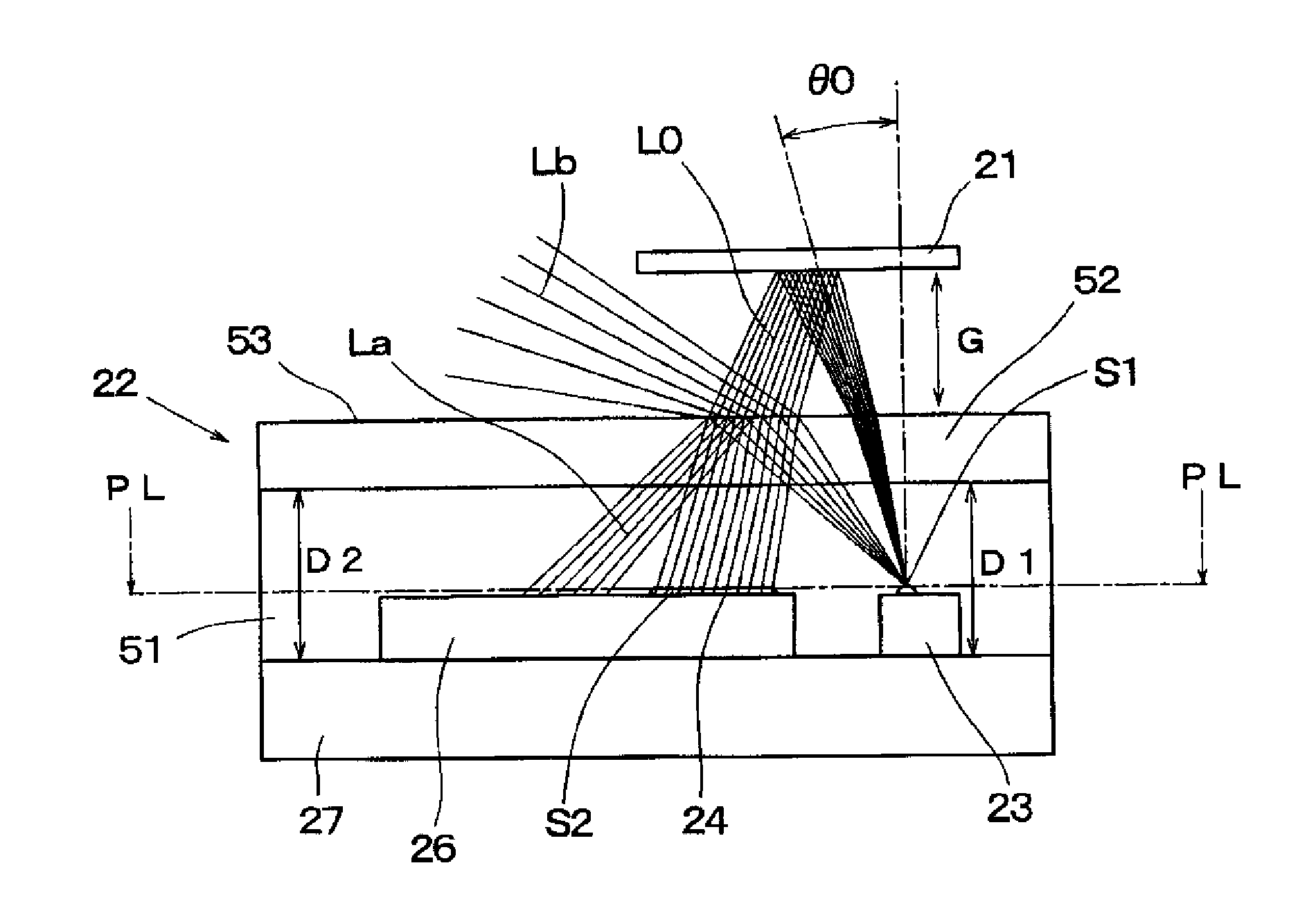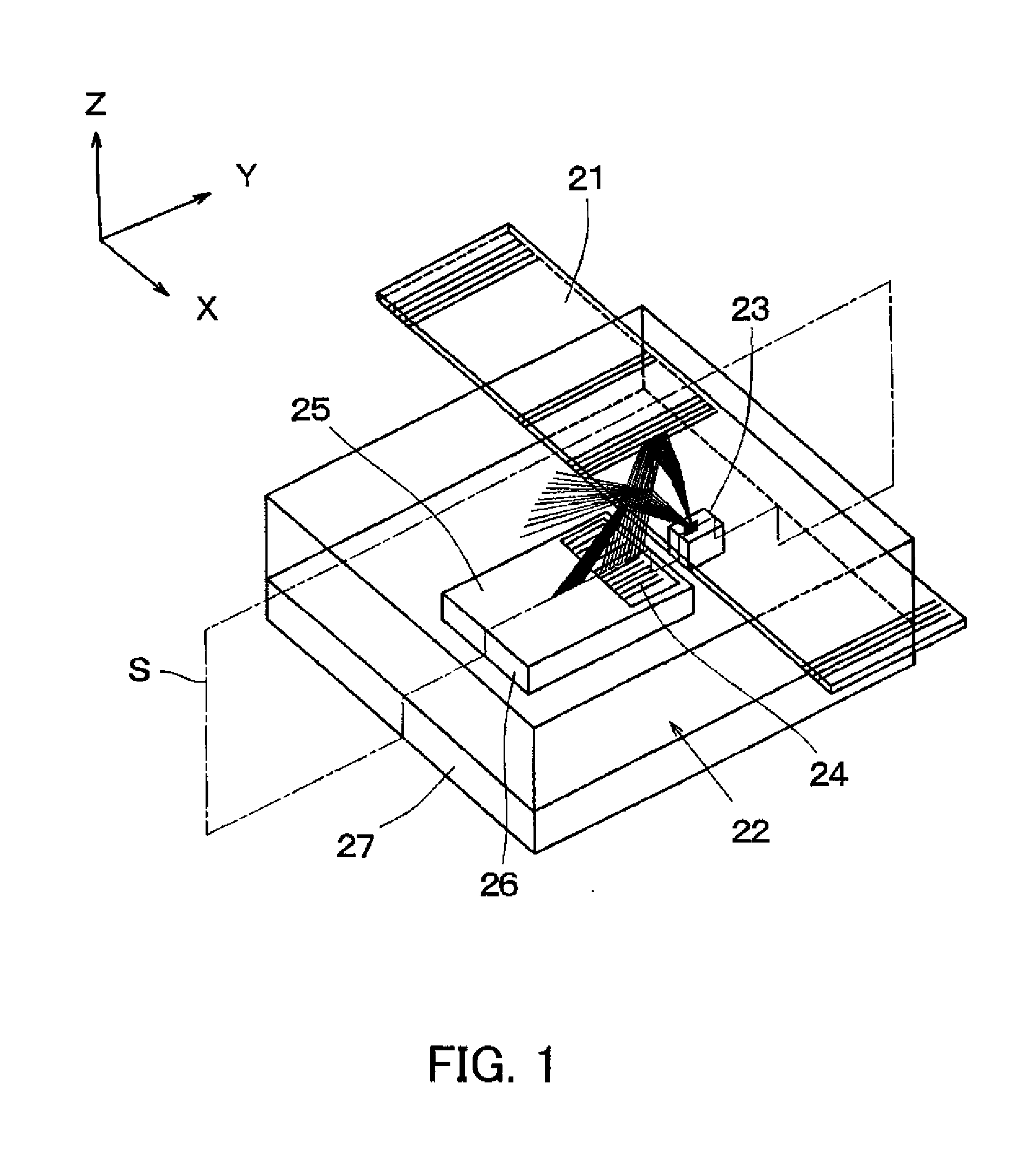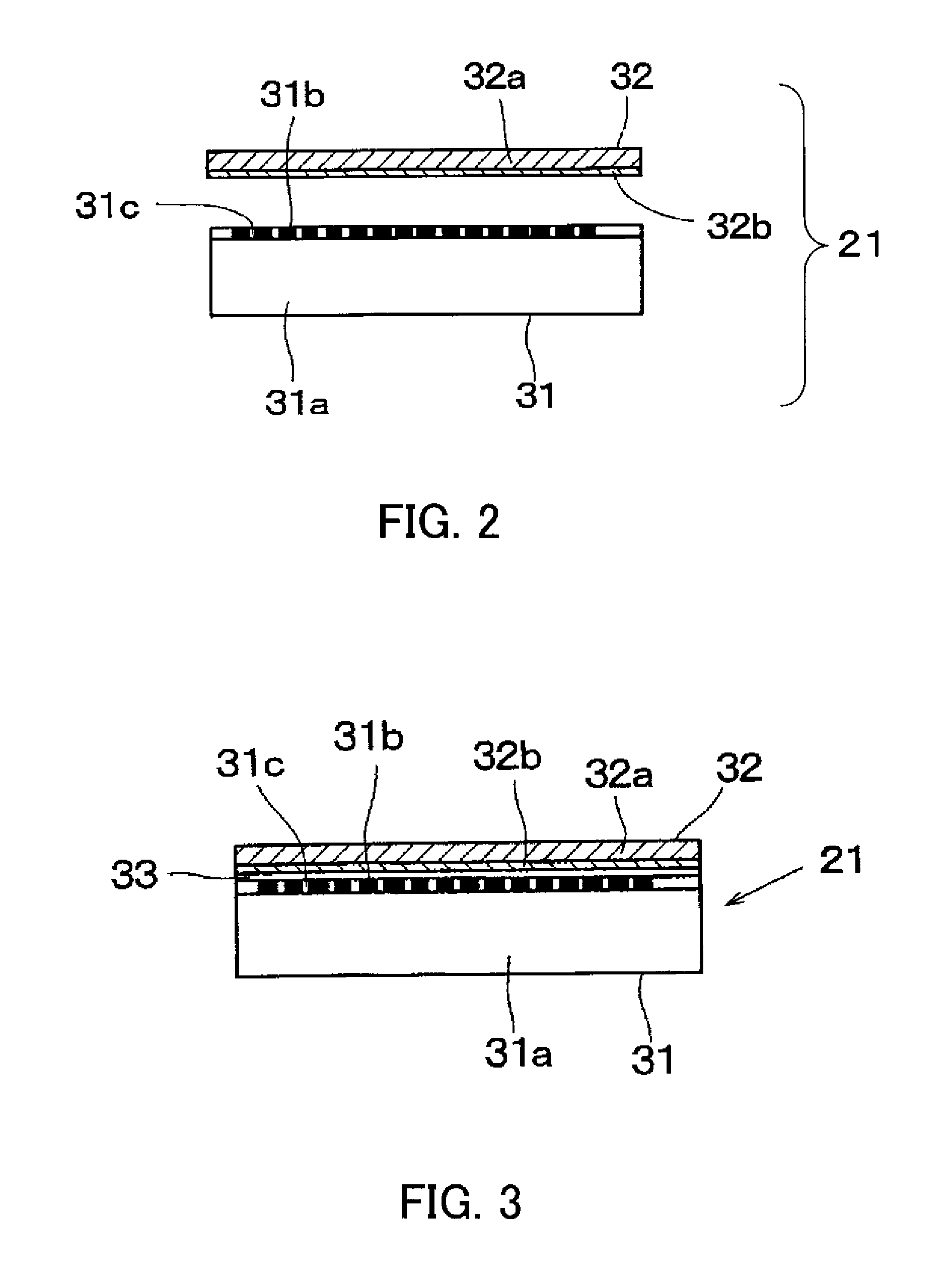Reflective sensor
a sensor and reflection technology, applied in the field of reflection sensors, can solve the problems of inability to achieve significant s/n ratio of sensor signal improvement, and inability to achieve significant s/n ratio improvement, etc., to achieve the effect of improving s/n ratio and reducing performance variations
- Summary
- Abstract
- Description
- Claims
- Application Information
AI Technical Summary
Benefits of technology
Problems solved by technology
Method used
Image
Examples
embodiment 1
[0058]FIG. 1 is a schematic diagram showing the configuration of a reflective encoder of Embodiment 1. A reflective scale 21 having stripes at regular intervals formed thereon is fixed to a moving object to be measured (hereinafter, the object to be measured is merely referred to as the object) and is movable in the direction of an X axis corresponding to the direction in which the stripes are arranged. A detection head 22 which is a reflective sensor is placed opposite to the reflective scale 21.
[0059]The detection head 22 is formed of a light-emitting element 23 realized by a LED chip, a light-receiving element 24 having a photodiode array as a light-receiving portion, a semiconductor device realized by a photo-IC chip 26 including a signal processing circuit part 25, and a substrate 27 on which the abovementioned components are mounted.
[0060]As shown in FIG. 2, the reflective scale 21 is formed of a pattern-forming sheet 31 and a reflective-layer-forming sheet 32. The pattern-for...
embodiment 2
[0105]FIG. 15 is a section view showing a simulation model of a reflective sensor that is Embodiment 2 of the present invention. In this embodiment, the members identical to those described in Embodiment 1 are designated with the same reference numerals. This is also applied to the later-described Embodiments 3 to 5.
[0106]In this reflective sensor, the height of the interface 53 is increased and the radius Rmax of the annular high-illuminance region produced by the totally reflected light is increased as compared with Embodiment 1. Specifically, D1 and D2 are set to 0.90 mm, Ni to 1.54 (epoxy resin), and No to 1.00 (air). From those values, Ri is nearly equal to 1.45 mm.
[0107]As a result, as shown in the illuminance distribution chart of FIG. 16, the size of an allowable circle in which the light-receiving portion can be placed is increased, and the area of the light-receiving region S2 of the light-receiving element 24 can be increased as compared with Embodiment 1. For example, in...
embodiment 3
[0108]FIG. 17 is a section view showing a simulation model of a reflective sensor that is Embodiment 3 of the present invention. In this embodiment, as for the height of the interface 53, the height D1 on the light-emitting-element side and the height D2 on the light-receiving-element side have different values. Specifically, D1 is set to 0.3 mm, D2 to 0.7 mm, Ni to 1.54 (epoxy resin), and No to 1.00 (air). From those values, Ri is nearly equal to 0.85 mm.
[0109]In Embodiment 3, the light-emitting element 23 is covered 0.3 mm above with the light-transmissive sealing resin 51 and the transparent glass 52. A cylindrical concave portion with an inner diameter of 0.6 mm and a depth of 0.4 mm is formed in the upper part of the transparent glass 52.
[0110]FIG. 18 shows optical paths of the effective reflected light and the totally reflected light in the package in Embodiment 3. The light-receiving region S2 is placed at a position where the totally reflected light does not enter.
[0111]As s...
PUM
 Login to View More
Login to View More Abstract
Description
Claims
Application Information
 Login to View More
Login to View More - R&D
- Intellectual Property
- Life Sciences
- Materials
- Tech Scout
- Unparalleled Data Quality
- Higher Quality Content
- 60% Fewer Hallucinations
Browse by: Latest US Patents, China's latest patents, Technical Efficacy Thesaurus, Application Domain, Technology Topic, Popular Technical Reports.
© 2025 PatSnap. All rights reserved.Legal|Privacy policy|Modern Slavery Act Transparency Statement|Sitemap|About US| Contact US: help@patsnap.com



